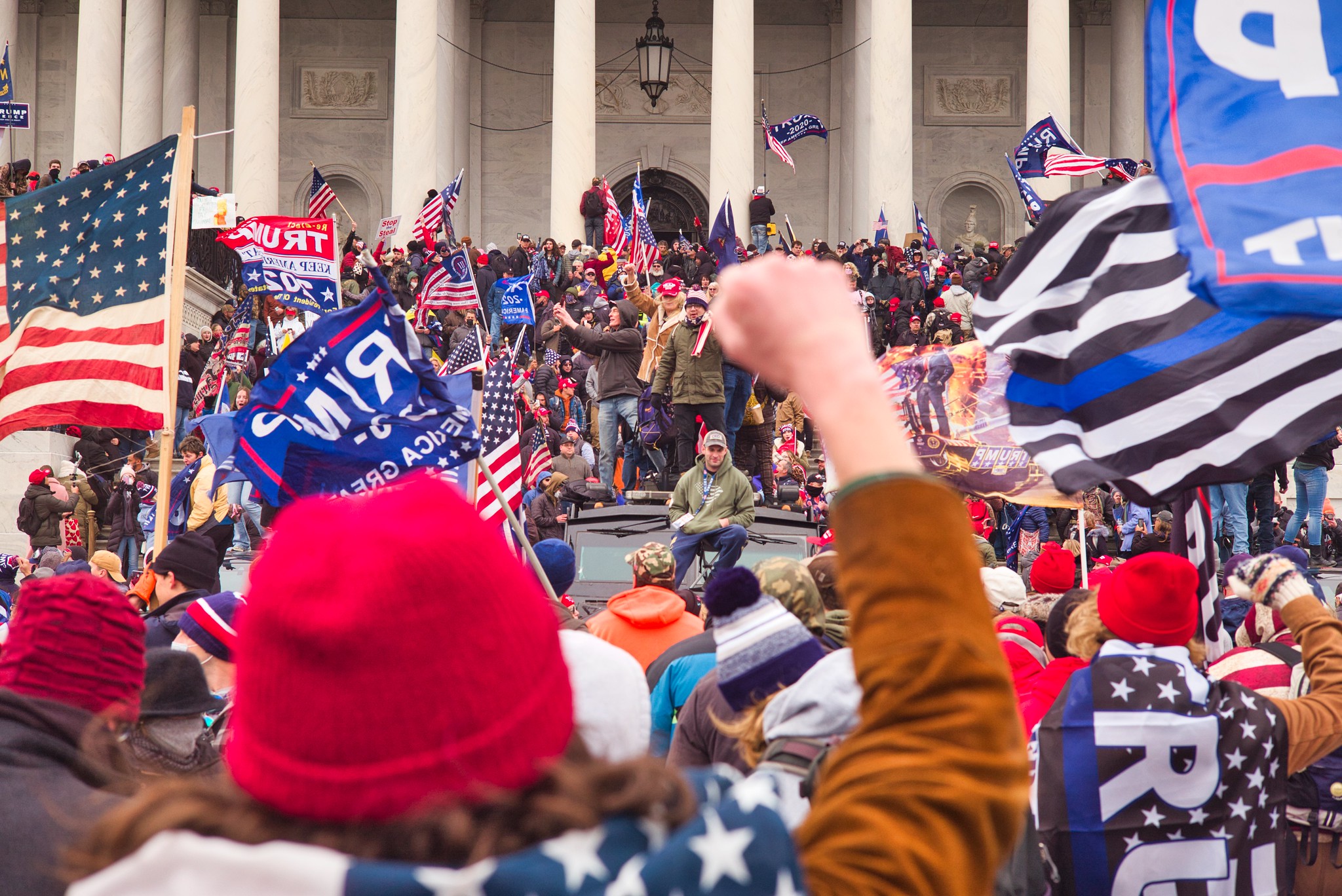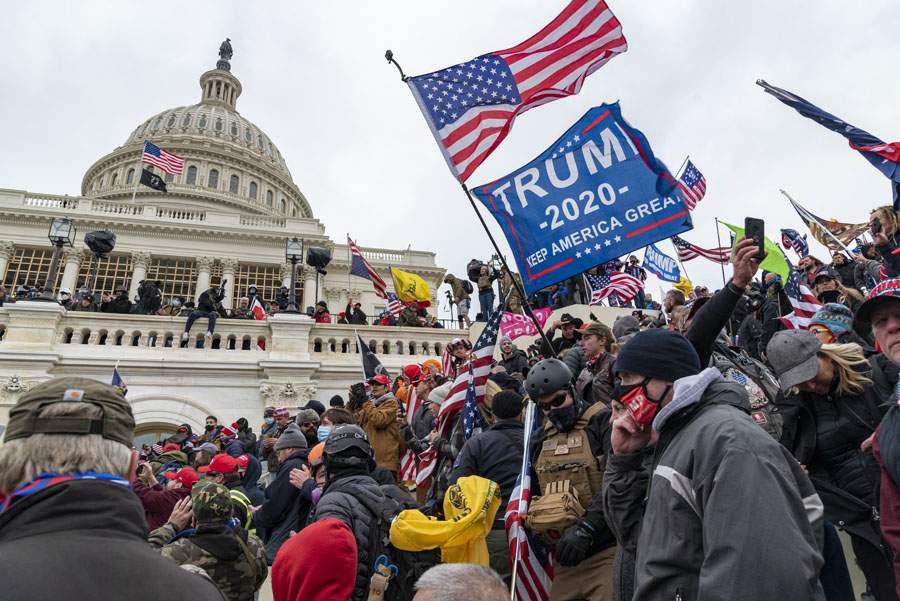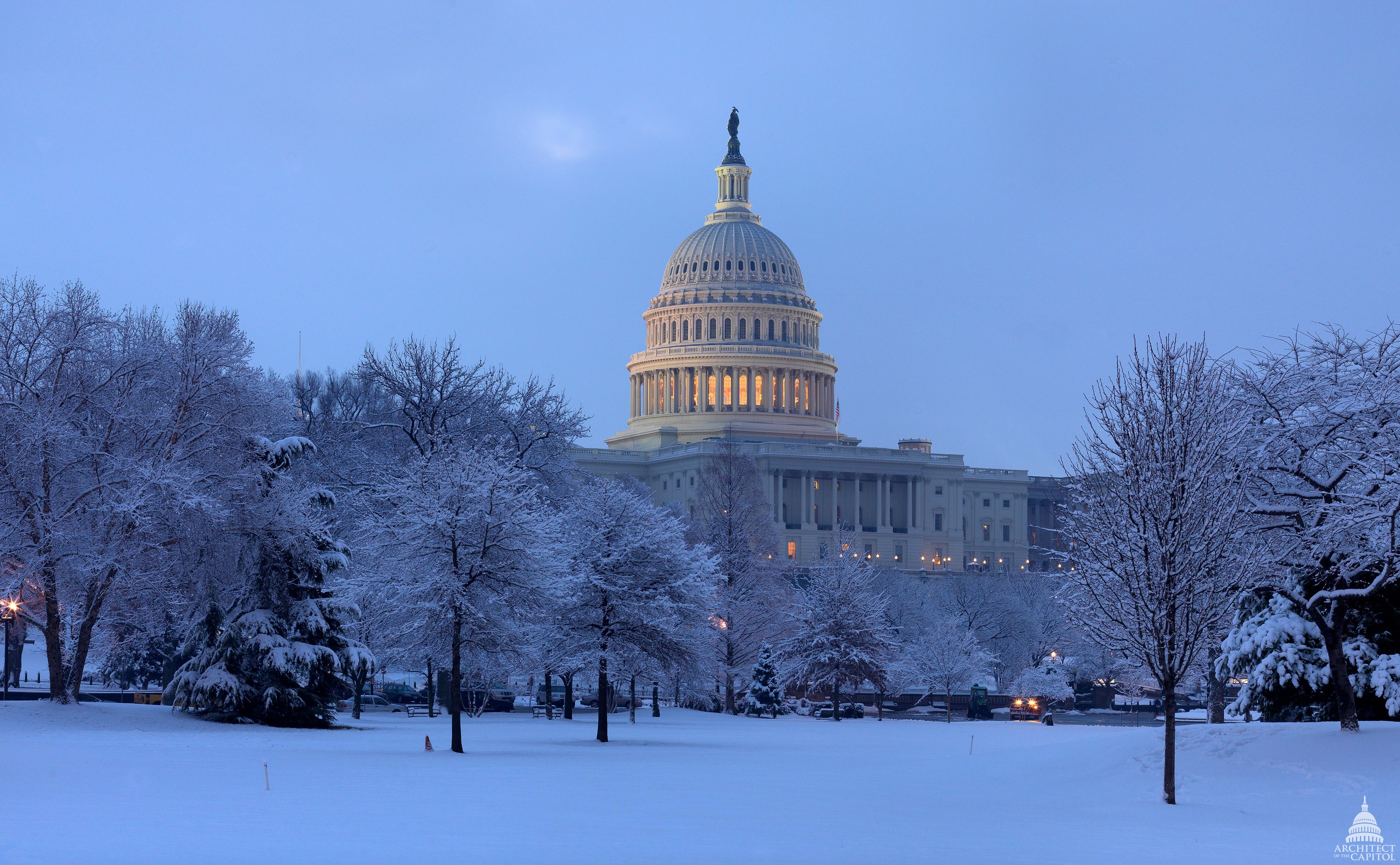What’s in the Senate’s Jan. 6 Report?
The investigative report lays out detailed factual findings and policy recommendations aimed at correcting the failures that enabled the Capitol assault.

Published by The Lawfare Institute
in Cooperation With

Five months after opening an investigation into the Jan. 6 assault on the Capitol, two Senate committees have released a report outlining their factual findings and a series of policy recommendations aimed at correcting the failures that left federal agencies and congressional security officials woefully unprepared for an attack on a joint session of Congress. The report—produced by the Rules and Administration Committee and the Homeland Security and Governmental Affairs Committee—offers the most detailed account yet of the historic breach.
Over the course of 95 densely footnoted pages, the committees document “critical breakdowns” in intelligence collection and sharing at the FBI and the Department of Homeland Security (DHS); they recount the “security, planning, and response failures” of the Capitol Police and the Capitol Police Board; and they examine caution and confusion at the Pentagon as officials weighed whether to send in the D.C. National Guard to reinforce overwhelmed law enforcement officers.
The report concludes that intelligence agencies failed to discern the nature and severity of the threat to Congress on Jan. 6, and that the FBI failed to give Capitol Police and local law enforcement officers adequate warning about the threat information it did have. The report also states that Capitol Police were not prepared to respond to the scale of violence that unfolded that day.
The committees’ investigation drew on thousands of documents, written statements of more than 50 Capitol Police officers, and interviews with current and former congressional security officials, executive branch officials and members of the D.C. Metropolitan Police Department. The report notes, however, that the committees have not been able to review all the information they have sought. Both DHS and the Justice Department have not yet fully complied with the committees’ requests for information, and the Office of the Sergeant at Arms of the House did not cooperate with requests for information. The committees nevertheless were able to assemble the most comprehensive record yet of the events of Jan. 6.
Findings
That record suggests that the federal government’s errors began with intelligence agencies’ failure to discern, and adequately warn law enforcement about, the violent threat to Congress in the weeks leading up to Jan. 6. The committees emphasized that neither the FBI nor DHS disseminated formal threat assessments or intelligence bulletins outlining the potential for violence targeting the Capitol on Jan. 6., hampering Capitol Police’s preparations for the joint session. Indeed, the committees found that the DHS Office of Intelligence and Analysis never issued a single intelligence product of any kind “specific to the January 6 Joint Session.”
During hearings before the Senate in March, FBI Director Christopher Wray and Jill Sanborn, then the assistant director of the FBI’s counterterrorism division, emphasized that the FBI had warned Capitol Police of the possibility of violence targeting Congress on Jan. 6, if only on the eve of that day. The FBI’s warning took the form of a Situational Information Report, issued by the Norfolk Field Office on Jan. 5, highlighting an online post directing protesters to come to the Capitol on Jan. 6 “ready for war.” Wray and Sanborn noted in their testimony that the FBI sent the Norfolk report to law enforcement partners, including Capitol Police, via email; posted the document to a law enforcement portal; and briefed partners on the contents of the document during an interagency meeting.
The committees found these methods of intelligence sharing to be lacking, however. Their report notes that the FBI did not forward the Norfolk report to law enforcement partners until 7:37 p.m. on Jan. 5, and the email transmitting the document said only: “Please see the attached SIR released this evening by Norfolk for awareness.” Moreover, the meeting at which an FBI official briefed law enforcement partners on the Norfolk report did not occur until 8:00 p.m. on Jan. 5. Robert Contee III, the acting chief of D.C. Metropolitan Police, told lawmakers that if the FBI believed the Norfolk report contained significant information, it should have gotten “on the phone directly with the officials that are responsible for the law enforcement response.”
The committees also raise in their report that an array of “social media posts call[ed] for attacking the Capitol prior to January 6.” The panels seem to suggest that this information should have alerted the FBI and DHS to the threat to the joint session of Congress, but they stop short of strongly criticizing the agencies on this front. During prior congressional testimony, FBI and DHS officials had stressed the difficulty of distinguishing credible threats online from the high volume of violent bluster. The report acknowledges this point and, without much pushback, excerpts long portions of FBI and DHS statements highlighting the agencies’ hesitancy to “collect [on] First Amendment-protected activities” online.
Although the report focuses much of its analysis of intelligence failures on FBI and DHS, it levels extensive criticism at Capitol Police’s intelligence components, too. The document concedes that Capitol Police is primarily a consumer of intelligence and, therefore, relies on intelligence agencies and law enforcement partners for up-to-date threat information, but it also notes that the department’s Intelligence and Interagency Coordination Division—one of three intelligence-related components of the force—is responsible for scouring open sources to gather, assess and share information. Through analysis of social media, posts on websites related to the Jan. 6 “Save America” rally and tips from private citizens, the division became aware of an array of threats to the Capitol but failed to incorporate all the available information into its intelligence assessments.
The division’s intelligence products also provided conflicting assessments of the severity of the threat to Congress on Jan. 6. Although the division’s special event assessment—the Jan. 3 document on which Capitol Police based its security preparations for Jan. 6—concluded that “Congress itself is the target on the 6th,” three daily intelligence reports issued after that on Jan. 4-6 represented the likelihood of violence as “Remote” to “Improbable.”
In addition to inconsistencies in Capitol Police intelligence assessments, the report documents deficiencies in the intelligence-sharing process across Capitol Police intelligence entities. The department has three intelligence components: the Intelligence and Interagency Coordination Division, the Threat Assessment Section and the Intelligence Operations Section. When the FBI shared the Norfolk report with Capitol Police on Jan. 6, only an analyst with the Intelligence Operations Section received the document. Although the the former Capitol Police chief and the Capitol Police inspector general offered conflicting accounts of what the analyst did after receiving and reviewing the document—either sending the Norfolk report to his supervisor or emailing the report to an Intelligence Operations Section distribution list—the report makes clear that no one in the Intelligence and Interagency Coordination Division or Capitol Police leadership received the document prior to Jan. 6.
Severe deficiencies in emergency planning, training and equipment compounded the department’s intelligence failures. The report notes that the former Capitol Police chief did not order the drafting of a department-wide operational plan to handle the crowds expected to protest in front of the Capitol on Jan. 6. That plan, the report states, would have outlined “the number of sworn officers on duty for the Joint Session, where those officers would be positioned, and the command-and-control” procedure. But no such plan was ever developed. Thus, although documents the committees reviewed indicate that Capitol Police had 1,214 officers “on site” by 2:00 p.m. on Jan. 6, the department was unable to confirm where its officers were stationed and when. Of the officers present, only a fraction—members of the department’s Civil Disturbance Units, or fewer than 300 in total—had recent training in responding to riots.
The report notes that fewer than 10 of those officers had been trained to use the “full suite” of Capitol Police’s “less-than-lethal munitions.” Some officers who responded to the violence on Jan. 6 had not practiced civil disturbance techniques in years and, due to equipment shortages, were forced to react in nothing more than their regular uniforms. Most were left to fend for themselves, as the department’s incident command system broke down and front-line officers heard little—or nothing at all—from senior leaders during the attack. The report quotes one officer, who stated: “We were on our own. Totally on our own.”
The picture the report paints is one of a department quickly overwhelmed. Although the former Capitol Police chief called for and almost immediately received backup from the D.C. Metropolitan Police Department early in the afternoon on Jan. 6, further reinforcements in the form of the D.C. National Guard took hours to arrive. The report cites several factors in explaining this extraordinary delay.
It points first to the dysfunction of the Capitol Police Board—which comprises three voting members (the House and Senate sergeants at arms and the architect of the Capitol) and one nonvoting member, the Capitol Police chief, with responsibility for overseeing the Capitol Police and for certain personnel and operational security decisions. Among the board’s functions is to vote on a request that the board declare an emergency and formally seek the assistance of the National Guard. But the committees found that “none of the members” of the board “appeared fully familiar with the process or requirements relating to emergency declarations or requesting external support.” That “lack of familiarity,” as the committees describe it, “delayed requests for National Guard assistance,” forcing the Capitol Police chief to wait to seek the Guard’s help as the security situation continued to deteriorate.
The report further found that a mix of caution and confusion at the Pentagon delayed the Guard’s deployment to the Capitol. The committees write that in light of the substantial criticism the Guard received after its aggressive response to the summer 2020 protests decrying the police murders of George Floyd and other unarmed black Americans, the Pentagon was wary of deploying the military to support civilian law enforcement functions.
Accordingly, the Defense Department imposed a number of restrictions on the Guard’s operations in D.C. when it approved the D.C. Metropolitan Police Department’s request for the Guard to assist police with traffic control on the day of the joint session. For instance, acting Defense Secretary Christopher Miller wrote a memorandum prohibiting the Guard from being issued riot gear or weapons, interacting physically with protesters, or sharing equipment with law enforcement without his prior authorization. Miller also forbade the head of the D.C. Guard from deploying the 40-person Quick Reaction Force (QRF) stationed at Joint Base Andrews, except as a last resort. The Army secretary at the time, Ryan McCarthy, added the further requirement that the commander of the Guard submit to him a “concept of operations” outlining the plan for the QRF’s use prior to its being dispatched. Taken together, these restrictions prevented the Guard units already deployed in D.C. on Jan. 6 from quickly moving to reinforce Capitol and D.C. Metropolitan Police as they fought to secure the Capitol.
The committees write in their report that several other factors at the Pentagon, namely confusion and miscommunication, slowed the deployment of the Guard. Department officials claimed not to have received a “workable request” for Guard assistance at the Capitol until roughly 2:30 p.m., at which point the Pentagon began the process of evaluating the request. When a request for Guard support requires the approval of the secretary of defense, as it did on Jan. 6, the approval process typically involves initial analysis of the request by the Army secretary; the Army secretary’s briefing the request to the defense secretary; the defense secretary’s consultation with the Defense Department general counsel and the chairman of the Joint Chiefs of Staff, among others; and finally, the secretary’s decision.
Army Secretary McCarthy told the committees that “tremendous confusion” defined the start of that process on Jan. 6, as Army officials sought to learn more about the security situation at the Capitol and had to respond to false reports circulating on Twitter that the Pentagon had denied a request for Guard assistance. After McCarthy briefed acting Defense Secretary Miller on the request, Miller approved the activation of the Guard at 3:04 p.m. The report notes that the authorization to activate the Guard “was not an instruction for [Guard] personnel to deploy to the Capitol, but rather an instruction to personnel to convene at the Armory, get outfitted with the appropriate equipment, and be briefed on the new mission.”
McCarthy claims that, after mission planning and consultation with D.C. officials, his authorization to deploy the Guard came at 4:35 p.m. But the commanding general of the D.C. Guard told the committees that he did not receive any go-ahead until 5:08 p.m. The report concludes that “[t]hese discrepancies reflect the breakdown in communication between [Defense Department] and [Guard] officials, who were all located in different parts of the District.” Because of these delays, the Guard did not arrive at the Capitol until 5:20 p.m.—nearly three hours after the Pentagon began considering a “workable request” for Guard assistance and after both the House and the Senate were secure.
As an aside in the portion of the report concerning the Pentagon, the committees mention that “all” Defense Department officials interviewed during the investigation “stressed the importance of the designation of a lead federal agency” to coordinate operations and information sharing across all departments on Jan. 6.
It is in this context that the committees introduce the Justice Department’s alleged role that day. According to acting Defense Secretary Miller, Army Secretary McCarthy and Gen. James McConville, then the Army chief of staff, the Justice Department served as the lead federal agency for the joint session on Jan. 6. The report states that McConville told committee staff that the Justice Department “did not conduct any interagency rehearsals” prior to Jan. 6 or develop “an integrated security plan, as [the Justice Department] did during the summer 2020 protests when it had also been designated as the lead federal agency.” The committees note that the Justice Department, through the testimony of Acting Attorney General Jeffrey Rosen, has publicly disputed that it served as the lead federal agency for Jan. 6. But the report is unable to further clarify this point given the department’s failure to comply fully with the committees’ requests for information.
Recommendations
To correct the failures that enabled the Capitol assault, outlined in the report’s factual findings and re-creation of the events of Jan. 6, the committees lay out a series of policy recommendations. To address shortcomings in intelligence collection and sharing, the committees suggest that intelligence agencies review how they handle and assess open-source information, such as social media posts and other online chatter, that contains violent threats. The panels also suggest that the agencies review their criteria for issuing intelligence products to consumer agencies, like the Capitol Police, and the procedures in place to ensure those products are seen. And they further instruct intelligence agencies to comply fully with statutory requirements on reporting domestic terrorism data to Congress. The report also calls for restructuring the Capitol Police intelligence apparatus. Specifically, it advocates for integrating Capitol Police’s distinct intelligence entities into a single “Intelligence Bureau,” and it emphasizes the need to ensure that the bureau has adequate staffing and training to analyze and effectively share intelligence with department leadership and rank-and-file officers.
The report makes several other recommendations concerning the Capitol Police and the Capitol Police Board. First, it emphasizes the importance of ensuring that Capitol Police is appropriately staffed, trained and equipped, including by mandating annual training in civil disturbance tactics and outfitting all officers with ballistic helmets, gas masks and gloves. The committees also recommend that Capitol Police require the adoption of a department-wide operation plan for special events, and that Congress pass legislation to give the Capitol Police chief the unilateral authority to request National Guard assistance in an emergency. The latter action would obviate the need for the Capitol Police Board to convene and deliberate during a crisis, and would eliminate the possibility that uncertainty regarding the board’s procedures might again delay a request for National Guard assistance. The report also recommends documenting and simplifying the process by which requests are submitted to the board generally in order to improve its functioning beyond during active emergencies.
For the Defense Department and the Guard, the committees recommend the development of “standing ‘concept of operation’ scenarios and contingency plans” to allow for quicker responses to a variety of incidents, from civil disturbance to terrorist attacks. The committees also recommend that the Pentagon and the Guard conduct joint exercises that would allow them to prepare for and refine their approach to responding to a future attack on the Capitol. The report also suggests that the Pentagon and the Guard improve communications before and during a high-profile event, and work to clarify approval processes and the applicable chain of command to avoid delays in Guard deployments during future crises.
Next Steps
Although the report marks the culmination of the Senate’s investigation of Jan. 6, the Rules and Administration Committee and the Homeland Security and Governmental Affairs Committee vow at multiple points in the document to continue “oversight of events related to January 6, including intelligence and security failures.” But the committees do not specify what form that ongoing oversight will take, or how they plan to share the information they hope to secure from DHS and the Justice Department (provided those agencies respond to the panels’ remaining inquiries). The public should expect to learn more soon.


.jpeg?sfvrsn=6117c6bf_4)


